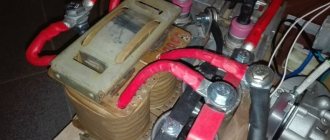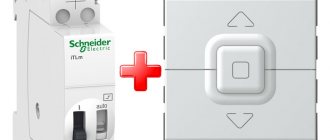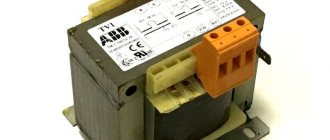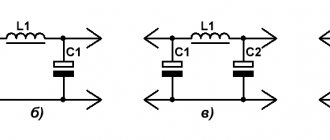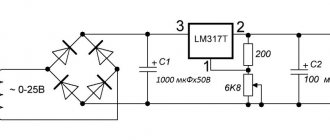Welding from a battery: is it possible?
Is welding possible with a 12 Volt battery? This question is asked by all owners of dachas and garages who still do not have a centralized power supply. Also, the voltage may simply not be enough to power an average power inverter. This is where doubts begin... On the one hand, you can remove the battery from your car and power the inverter, and then put the battery back. On the other hand, many doubts arise. What quality will the seam have? Will my inverter burn out? Is it possible to use the battery in a car later?
From our experience, we can say that welding from a battery with your own hands is quite possible. We won't say that car batteries are ideal for powering an inverter, but they can be an excellent backup option. All car batteries have a decent power reserve, so in theory they can power a simple household inverter.
Personal experience of welding from a battery
We will talk about our experience in using batteries as an inverter power source. You can conduct the test yourself and repeat our steps to verify the result.
Let’s say right away that one standard 90Ah battery will not be enough. Just take it for granted. At first we tried to power the inverter from one battery. We cooked at a low current using electrodes with a diameter of 2 mm. The arc was practically not ignited, the seams were made with great difficulty. Then we took two batteries and connected them in series.
The work went a little easier, but the result was still far from ideal. The seams were made a little easier, but the arc still “walked”, burned unstably, sometimes even went out, and the whole ignition process had to be repeated again. The end result was very defective seams with lack of penetration. In this case, the electrodes strongly stuck to the metal, and their consumption increased significantly. In short, the welding was unsuccessful.
We could have given up on this idea, but there was another battery lying at the dacha and we decided to connect it to two other batteries. And this option turned out to be the most viable. When using three batteries, the power reserve is so large that, in principle, it is possible to achieve more or less stable operation of the welding machine.
We experimented with different settings, increasing and decreasing the current, and using electrodes up to 4 mm. And overall everything went well. Of course, welding from batteries is not as comfortable and simple as from a regular outlet. But if you watch the arc carefully, you can understand its behavior and adjust. Moreover, when powered by 3 batteries, the arc behaves much more stable and is easier to ignite.
During our experiment, we found out that three batteries can be used not only for welding, but also for cutting metal parts of small thickness. But the cut is not very beautiful.
By the way, do not forget to monitor the current strength. Do not set the values too high, as batteries tend to increase the final current to too high values, and you may simply burn through the metal. And in general, carefully monitor the progress of work. Because welding from a battery requires care and skill. This is the only way to make a more or less normal seam.
There are four main types of welding machines
- Transformer. The device operates on alternating current. The main unit is no different from a conventional power supply: the input is 220 volts, the output is the required 60 volts. Due to the possibility of mechanical movement of the secondary winding along the core, the value of the operating current changes.
Advantages: simplicity and low cost of design, maintainability. Disadvantages: large size and weight, alternating current leads to unstable formation of the weld, highly qualified specialist is required for work. - Rectifier. Essentially, this is the same transformer, only with a diode (thyristor) rectifier in the secondary winding circuit.
After converting the voltage through a transformer (with a traditional mechanical current regulator), the secondary AC voltage is rectified in one of the following ways. In primitive (inexpensive) designs, a diode bridge is used. More advanced circuits operate on a thyristor circuit, with the ability to adjust parameters. Advantages: stable welding parameters, the ability to work with various metals, no highly qualified craftsman required. Disadvantages: higher cost, difficulty in repair and maintenance. Some craftsmen convert a simple transformer welder into DC apparatus. To do this, you just need to assemble a powerful rectifier and connect it to the output of the secondary winding. This will require powerful diodes (assembling a bridge) and radiators to dissipate heat.
A common drawback of the considered schemes is the dependence of the output parameters on the quality of the electrical network. If there are voltage sags (this is normal during welding), the characteristics of the output voltage and current change. As a result, the quality of the weld seam suffers. Therefore, manual adjustment of the current strength (by moving the windings) is mandatory.
- Semi-automatic This is an advanced version of the rectifier, with a device for mechanically feeding welding wire into the work area. Welding is carried out in an inert gas environment; a gas cylinder is required to complete the work. Advantages: high-quality weld, no need for special training of the craftsman. Disadvantages: additional equipment required (gas cylinder), high cost.
- Inverter. Today, it is the most common welder among amateurs. An inverter power supply with PWM control is used as a voltage converter. This technology has now become accessible, which has a positive effect on the cost. Advantages: even a novice welder can operate the device, compact size, light weight. Disadvantages: not very high reliability, difficult to repair.
Any of the listed devices can be assembled independently. Let's review manufacturing technologies by model:
Is it worth cooking from a battery?
Welding from car batteries is possible, but we do not recommend using this method on an ongoing basis. The only advantage of this method is the possibility of welding in the field. But there are several times more disadvantages.
The most important drawback is the almost uncontrollable current with which welding is carried out from the battery. The batteries themselves tend to increase the initial current value, and you will never know the exact values. This is inconvenient and leads to frequent defects that you cannot even prevent.
Also, due to uncontrolled current, the device may simply burn out. Our inverter survived, but if you use it ineptly, you will lose both three batteries and a welding machine. At the same time, be prepared for a large overconsumption of electrodes. When welding from batteries, you can waste a whole pack of rods when manual arc welding.
In addition, it is better not to install the battery used in this case in the car. The likelihood of problems is small, but it still exists.
Is it all worth it? Yes, if you have no way to power the device at all, but it is very necessary. But in other situations, it is better to simply buy a fuel-powered generator and use it to power the welder. In addition, you can also power other power tools, which is very convenient.
We make welding machines with our own hands
Welding work at home has long become commonplace. Availability of equipment and consumables, the opportunity to inexpensively attend welding courses, various training manuals for acquiring independent skills. All these factors make it possible to save on the labor costs of a professional welder and increase the efficiency of work.
However, if you carefully study the welding machine market, unpleasant aspects become clear:
- High-quality welders have a high cost; it is more profitable to hire a specialist several times (unless, of course, you do this work constantly).
- Affordable units have a number of disadvantages: low reliability, poor seam quality, dependence on the supply voltage and type of consumables.
Hence the conclusion: if you need high quality equipment at an affordable price, you will have to make a welding machine from available materials with your own hands.
Safety precautions
In appearance, batteries do not pose any danger, since all their “internals” are enclosed in a durable casing. But this does not mean that you need to neglect safety precautions when using car batteries. Moreover, when connected to an inverter.
If you need to remove the battery, move it, or perform any other actions, use special gloves. Ideally, you also need to choose the right clothes, but you are unlikely to think about this while sitting in the garage. Therefore, at least have thick gloves with you. If you get electrolyte on your skin, wash it off immediately with the solution. The solution can be made from soda or ammonia with water.
After handling, remove gloves and wash your hands thoroughly with soap. Don't eat near the battery, don't smoke, and generally take this seriously. Need a break? Leave the batteries in a separate room and leave yourself.
If your batteries are dirty, they need to be cleaned. This can be done using the same solution of ammonia with water. Use a clean, dry cloth. If you removed the batteries from the car, then clean the holes in the plugs so that there are no blockages. Otherwise, there may be excess gas pressure.
And in general, remember that batteries can be a potential source of danger to your life and health. Better protect your skin from acids and electrolytes, protect your eyes and mucous membranes. Do not perform any manipulations with batteries while intoxicated. Keep a small fire extinguisher nearby just in case. After all, not only the battery, but also the inverter itself can become a source of danger.
These rules are simple and obvious, but in the process of work, most masters forget about them. And then they regret it. Be smart and prevent a lot of problems by practicing safety precautions.
Microwave power supply
The considered welding machine circuit after assembly should produce a minimum of 4 kW; if we take the element from a microwave oven, which has a rating of 1.2 kW, as the main part, it will not be enough.
For operation, two transformers should be selected, which will subsequently need to be connected to each other.
- By powering two parts to a 220-volt network, the integrity of the winding is checked.
- To remove the high-voltage winding, you need to cut the magnetic core.
- The coil is removed from the chain.
- From a copper bus of 10 sq. mm the core is manufactured.
- A dielectric spacer is created under the primary winding.
- The coil and magnetic circuit are connected.
- All cables are connected in accordance with the diagram.
After installing the electrode in the holder, you can begin to check the functionality of the created unit; there is no need to take markings with a diameter of more than 4-5 mm.
Useful tips Connection diagrams Principles of operation of devices Main concepts Meters from Energomer Precautions Incandescent lamps Video instructions for the master Testing with a multimeter

